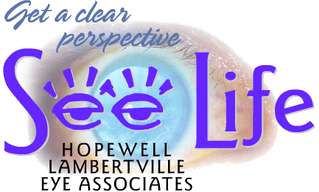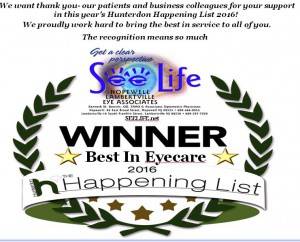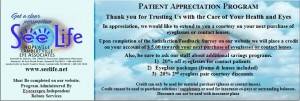Enjoy the Celebration of the 4th of July - But Be Safe
As families and communities make plans for a star-spangled Fourth of July, many anticipate the holiday’s traditional fireworks displays and the use of home fireworks. The poor and improper handling and use of consumer fireworks are highly related to an increase risk of injuries, not only skin burns but also potentially devastating injuries of the eye(s).
The following are some key need-to-knows about the dangers of consumer fireworks use during the Fourth of July and other occasions.
Consumer fireworks can be dangerous.
According to recent data from the U.S. Consumer Product Safety Commission (CPSC), injuries from fireworks cause approximately 9,100 visits to the emergency room each year, with 15% of those injuries being eye-related. These injuries largely occur in the weeks near the Fourth of July.
Each state has different laws related to the use of consumer fireworks. It’s important to know your state and county laws regarding the sale and use of fireworks ahead of planned displays. “Although consumer-grade fireworks are legal in many states, they are extremely dangerous and can cause devastating eye injuries and even blindness.
The most common injuries we see from fireworks are to the fingers, hands and legs. More than half of the injuries involve burns.”
And the most commonly injured parts of the body
And the most commonly injured parts of the body
- Hand and Fingers 36%
- Head Face – Ears 19%
- Eye 19%
- Torso 11%
- Arms 5%

Children should never play with or handle any type of fireworks.
All fireworks can be dangerous. Small sparklers, which can reach a temperature of 2,000 degrees, can cause serious burns. Fireworks should only be handled by professionals; they should never be handled by children.
Just because you’re not lighting or throwing it doesn’t mean you’re safe.
One CPSC study showed that 65% of people injured by fireworks are bystanders. Two of the most common causes of fireworks-related injuries are from mortar-type fireworks and bottle rockets, which are thrown before they explode and can strike an innocent bystander. Two key precautions to remember: Both fireworks handlers and bystanders should wear protective eyewear that confirms in product descriptions that it meets the standards set by the American National Standards Institute.
When viewing a professional fireworks display, watch from at least 500 feet away and respect all safety barriers.
To help prevent eye injuries during fireworks season, the AOA recommends the following tips to help protect and preserve eyesight during the Fourth of July holiday:
- Discuss fireworks safety with children and teens prior to the Fourth of July holiday.
- Do not allow kids to handle fireworks, and never leave them unsupervised near fireworks.
- Wear protective eyewear when lighting and handling fireworks of any kind.
- Store fireworks, matches and lighters in a secure place where children won't find them.
- Refrain from purchasing sparklers. Heating up to 2,000 degrees or hotter, sparklers are the No. 1 cause of firework injuries to children requiring trips to the emergency room. The CPSC reported that sparklers accounted for more than half of the total estimated injuries to children under age 5.
- Be aware of your surroundings and only light fireworks when family, friends and children are at a safe distance.
If you experience a fireworks-related eye injury:
- Seek medical attention immediately.
- Avoid rubbing or rinsing the eyes or applying pressure.
- Do not remove any object from the eye, apply ointments or take any pain medication before consulting a trained medical professional.
- Safety during fireworks displays can help prevent serious eye injuries, such as burns of the eye and open globe injuries, which may lead to loss of vision. Protecting your eyes this Fourth of July can ensure you see the remarkable fireworks from public displays for years to come.
If you have any concerns call our office Hopewell (609-466-0055) Lambertville (609-397-7020) www.seelife.net
https://www.vsp.com/eyewear-wellness/eye-health/fireworks-safety




